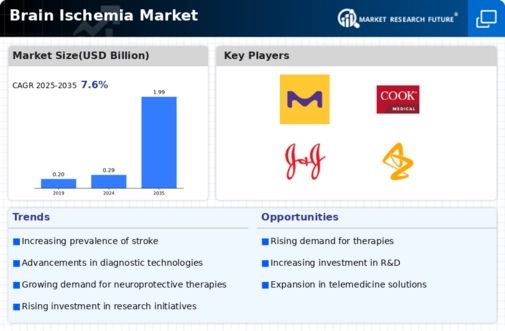Brain Ischemia Market Restraints
The rigid administration restrictions and limited accessibility of treatment alternatives, as well as treatment costs, are expected to stymie the Brain ischemia market Share shortly. The high market Value and technologies is a major restraint on the global market, particularly in poorer countries with weak reimbursement systems.
The brain ischemia market report also includes the detailed analysis for each country, including growth in healthcare capital expenditure, installed base of various types of products for the market, the impact of technology using lifeline curves, and changes in healthcare regulatory scenarios, as well as their impact on the market Outlook.
Brain Ischemia Market Study Objectives
The report focuses on research and analyses of the global Brain ischemia market size (value and volume) by company, major regions/countries, types, and applications, and historical data with a forecast.
The report analyses the competitive developments in the market, such as market expansions, partnerships, new product launches, and acquisitions, and also develops a strategic profile of the key players and a thorough analysis of their growth strategies.
The report includes the identification of the various subsegments of the market to better comprehend its structure and to disseminate precise information on the major aspects impacting market growth (growth potential, drivers, industry-specific risks).
Brain Ischemia Market Segment Overview
The Global market is further bifurcated into various segments depending on various factors to help the market Size grow as per the predicted CAGR growth by the end of the Forecast period and achieve the expected Brain ischemia market Value.
Based on the condition type, the global market has been segmented as follows:
Focal Brain Ischemia Global Brain Ischemia
Based on the treatment, the global market has been segmented as follows:
Angioplasty Beta-Blockers Angiotensin-converting enzyme (ACE) Inhibitors Others
Based on the end-user, the market has been segmented as follows:
Hospitals & Clinics Research & Academic Institutes Others
Based on the region, the market has been segmented as follows:
The Americas Europe Asia-Pacific The Middle East & Africa
Brain Ischemia Market Regional Analysis
The Americas are expected to lead the brain ischemia market because of the increased frequency of brain ischemia and the presence of a well-established healthcare system. Ischemic strokes accounted for 87 percent of all strokes in the United States.
Due to the presence of well-developed healthcare infrastructure, the availability of money for research, and rising healthcare expenditure, Europe is predicted to occupy the second-largest position in the brain ischemia market trends.
Asia-Pacific is predicted to be the fastest-growing regional market because of the existence of expanding nations such as China, India, and South Korea, as well as a huge patient pool suffering from brain ischemia.
The Middle East and Africa's market is predicted to increase modestly because of the existence of developing nations such as Egypt and Saudi Arabia, rising healthcare costs, and the rise of the healthcare industry.
Brain Ischemia Market Competitive Landscape
The competitive landscape for the brain ischemia market breaks out information by the competitor. Financials, revenue generated, market potential, investment in R&D, new market initiatives, global presence, company overview, production sites and facilities, production capacities, company strengths and weaknesses, product launch, product width and breadth, and application dominance are among the details included. The major key vendors of the global market are as follows:
Taxus Cardium (US) Edwards Lifesciences Corporation (US) Boston Scientific Corporation (US) Merck KGaA (Germany) Medtronic (Ireland), Cook Medical (US) Novartis AG (Switzerland) Boehringer Ingelheim International GmbH (Germany) Abbott (US) Dickinson and Company (US) Johnson & Johnson Services Inc. (US) Bayer AG (Germany), and AstraZeneca (UK)
Recent Developments
The rise in most chronic diseases such as cancer, diabetes, cardiovascular problems, and brain ischemia is due to sedentary lifestyles, bad diets, and lack of exercise but the various players in the market are working on it and taking a step forward.
The increasing prevalence of risk factors associated with brain ischemia, such as hypertension and diabetes, underscores the urgent need for innovative therapeutic strategies and preventive measures to address this growing public health concern.
Centers for Disease Control and Prevention (CDC)















Leave a Comment